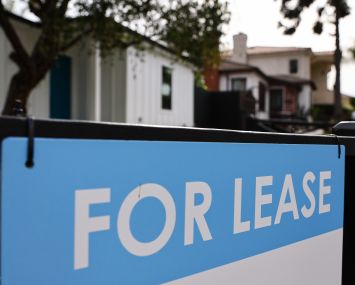New York City Commercial Real Estate Owners Look Ahead
To 2026 and into the next decade ...
By The Editors November 7, 2023 6:05 am
reprints
There is an inner soothsayer in every decent real estate developer.
They have placed a significant bet on the future: What can rise on an empty plot of land? Who must they tap to make this vision a reality? How will this hypothetical building fit into the greater landscape? Who will buy or rent this property?
Likewise, buyers and sellers of real estate have to make a prediction about what the financial conditions of the city (or the country) will look like as they decide the composition of their portfolios.
Real estate is such a long process that without some sense of where the future was going all business would grind to a halt.
Some of these owners or developers keep their heads down and trust in the hoary (if accurate) wisdom, “Never bet against New York.” They have waited out interest rate hikes and crime waves in the past, and they can do so again.
Others have pulled up stakes and turned to the secondary and tertiary markets, where the land is cheaper, the tax incentives are more plentiful, and the zoning boards aren’t quite so territorial.
Still others have looked at asset classes and products that they had never touched before and decided this is where the future lies.
However, the thing that’s been so vexing about the last few years is how much our internal oracles have failed us. Since the turn of the century, the U.S. has been embroiled in a slew of crises that not even Cassandra would have anticipated. Anyone who thinks they know what will happen tomorrow, much less a decade out, is almost always wrong.
“Ten years out is a bit too far to prognosticate,” said Savanna’s Nicholas Bienstock.
Yes, that’s absolutely true. Still, decisions need to be made here and now that will bear fruit five or 10 years down the line.
In this Owners Magazine, we asked the 36 men and women we polled to dig deep and tell us what they would be doing three years, five years and 10 years hence. Some skipped the 10-year part of the question. But enough answered to paint a fascinating portrait of how owners see the real estate landscape. (And you can always look directly at the source to see the answers in full.)
2026
To a certain extent, the next three years will remain defensive for a lot of owners.
“Our portfolio will diversify,” said Michael T. Cohen of Williams Equities. “Today it’s 100 percent office and retail, but I expect it will come to include other types of assets. We’re also looking to grow the portfolio and take advantage of the likely buyer’s market.”
Indeed, prices have been coming down in New York office for some time now, and one should expect a number of well-capitalized owners to pounce when the market has reached bottom — and many are making plans accordingly.
“Just in the last 20 months or so, we have purchased nearly half a billion dollars in property, primarily funded by dispositions of suburban assets, and diversified into residential to become a New York City-focused portfolio,” said ESRT’s Anthony Malkin. “Over the next three years or so, we think there will be an improved opportunity to buy property.”
It’s “similar in nature to what we last saw following the Global Financial Crisis,” said Bienstock. “At that time, Savanna was one of the most active buyers of distressed debt-to-equity transactions in New York. We see a similar opportunity emerging as we go into 2024.”
“2026 will be Marx Realty’s best-performing year in our history,” Craig Deitelzweig predicted boldly. “We are just beginning to see significant opportunities to purchase and reimagine bland office properties and to transform them with the Marx brand of hospitality-infused office properties.”
But, while New York remains important for many owners, a lot of developers and owners have been looking beyond Gotham in their hunt for yield.
“Over the last five years, we have had continued success in building our platform outside of New York City — in New Jersey, Pennsylvania, Westchester and Connecticut,” said Jason Alderman of Hines. “This activity has generally been non-office, focusing on multifamily acquisitions and development and expanding our industrial platform.” Hines expects more of the same in 2026.
Of course, plenty are following a multi-pronged approach of being in New York and beyond. Savanna, for instance, isn’t strictly focused on New York; they’re in the process of building The Olara, a 1.6 million-square-foot condo and rental in West Palm Beach, Fla.
“By 2026, BRP Companies is anticipated to have doubled in size when compared to the firm’s 2021 stature,” said Meredith Marshall of his firm. “This growth is being driven by our active involvement in a substantial volume of transactions across New York, New Jersey, the mid-Atlantic and the Southeast.”
2028
Some are already laying out big plans for the next five years.
“We will have completed $5 billion of new P3 [public private partnership] developments,” said Don Peebles of the Peebles Corporation. “Angels Landing in L.A. and Affirmation Tower in New York will be under construction.”
“We are working on at least two … large-scale, long-term development plans that we expect will keep us on a pace of adding approximately 2,500 units to our portfolio every five years,” said TF Cornerstone’s Jake Elghanayan. “In terms of new business, we think there is a compelling office-to-residential conversion opportunity nationally, and so, five or 10 years from now, I would hope we begin to see the fruits of that labor.”
“We expect our total assets under management, today at $850 billion, to grow to roughly $2 trillion over the next five years,” said Brookfield’s Ben Brown. (Brown declined to be specific, but that should certainly tantalize all readers.)
Whatever else happens in New York City in the next five years, the demand for affordable housing will not be met. And that’s a big opportunity for owners.
“Our goal for 2028 and beyond is to build outside of the inner-city market in neighborhoods where the implementation of crucial affordable housing is key to their survival,” said BFC Partners’ Joseph Ferrara. “We have set our internal goals to always have a minimum of 1,000 units in construction and to add a minimum of another 2,000 units to our asset portfolio by year-end 2028.”
There are certainly more owners who think New York City will rebound and recover by that point.
MAG Partners will be “operating and building in multiple cities, and looking back and laughing at all those who said New York City was dead,” predicted MaryAnne Gilmartin. “And were wrong — again.”
One fair prediction would be that predictions change.
“Our approach is the opposite of the family real estate dynasties in New York City,” said Wildflower’s Adam Gordon. “For them, grandpa was savvy and entrepreneurial and built a fortune, which he passed onto future generations. … [Wildflower] operates more like a sports team than a family. The health and success of the franchise relies on fresh talent. When the talent has earned their Super Bowl rings and made their retirement earnings, they leave the team to find other adventures, and young and hungry talent takes their place. It’s an organic process much like the cycles of nature.”
2033
It’s here that the thinking becomes broadest.
“Long-term planning is what we do,” said Howard Hughes Corporation’s David O’Reilly. “In 10 years, we will have significantly advanced our development pipeline — starting with the roughly 30,000 residents who will be living in our community of Teravalis in the Phoenix West Valley as we launch into the next phase of master planning and development beyond Teravalis’ first neighborhood of Floreo.” Howard Hughes will also be concentrating on the Lakefront District in Downtown Columbia in Maryland; The Woodlands, in Texas; its movie studio business in Summerlin, Nev.; and Ward Village in Hawaii.
But, it’s rare to have megaprojects like that to focus on. Instead, by necessity, many owners that we polled spoke about three things: technology, climate change and housing.
“Over the next decade, we will continue to reinvest in our core commercial buildings to meet the rapidly evolving needs of our tenants,” said Fisher Brothers’ Winston Fisher. “This will include seamless integration of AI technologies into our buildings and embracing the digital world in our physical assets.”
“We will further enhance our commitment to sustainability and technology, revolutionizing the industry,” said Time Equities’ Francis Greenburger.
Energy consumption will be critical, no matter which side of the political aisle one inhabits. “Continued growth in real estate, continued growth in the energy sector with both fossil fuels and safe, efficient nuclear energy,” said Red Apple Group chairman (and former mayoral candidate) John Catsimatidis about his company’s priorities over the next decade.
Given the expectation that more than half a million more housing units would be needed to keep up with population growth in New York City by 2030, housing (and affordable housing, specifically) is on many minds.
“In a perfect world, we will have created some really dynamic public/private partnerships by then to allow us to build affordable housing with social services components,” said Charney Companies’ Sam Charney.
“The affordability crisis together with climate change are the most pressing issues our society faces, and it’s up to my generation to grab the baton and make serious headway in solving it,” said Tredway’s Will Blodgett. “It’s now or never.”


